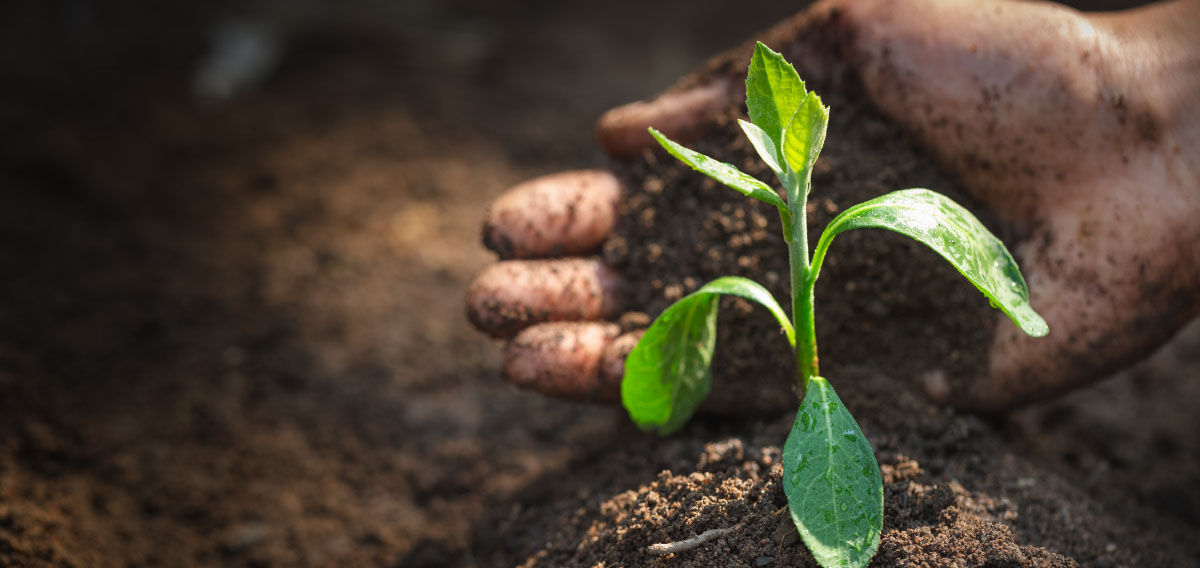Composting is the recycling of food waste and organic matter into compost – a nutrient-rich, organic fertiliser. Often called “black gold” by farmers, compost has the power to transform your garden or vegetable plot by encouraging vigorous growth and improving the health and structure of soil. Other benefits of home composting include reducing your greenhouse gas emissions and your reliance on chemical fertilisers.
If you’re wondering how to get started, what can be composted and how long the process takes, read on to find out!
Don’t waste your wastes: the benefits of composting
The layering of general waste in landfill creates methane, a powerful greenhouse gas that when measured over a 20-year period is 84 times more potent than carbon dioxide. In the UK, methane from landfill currently represents as much as 40% of all the methane released.
Recycling is essential to reduce the amount of waste reaching landfill, but what many people don’t realise is that food waste is recyclable. In fact, half of all the food waste you throw in the bin could be composted instead of being sent to landfill sites.
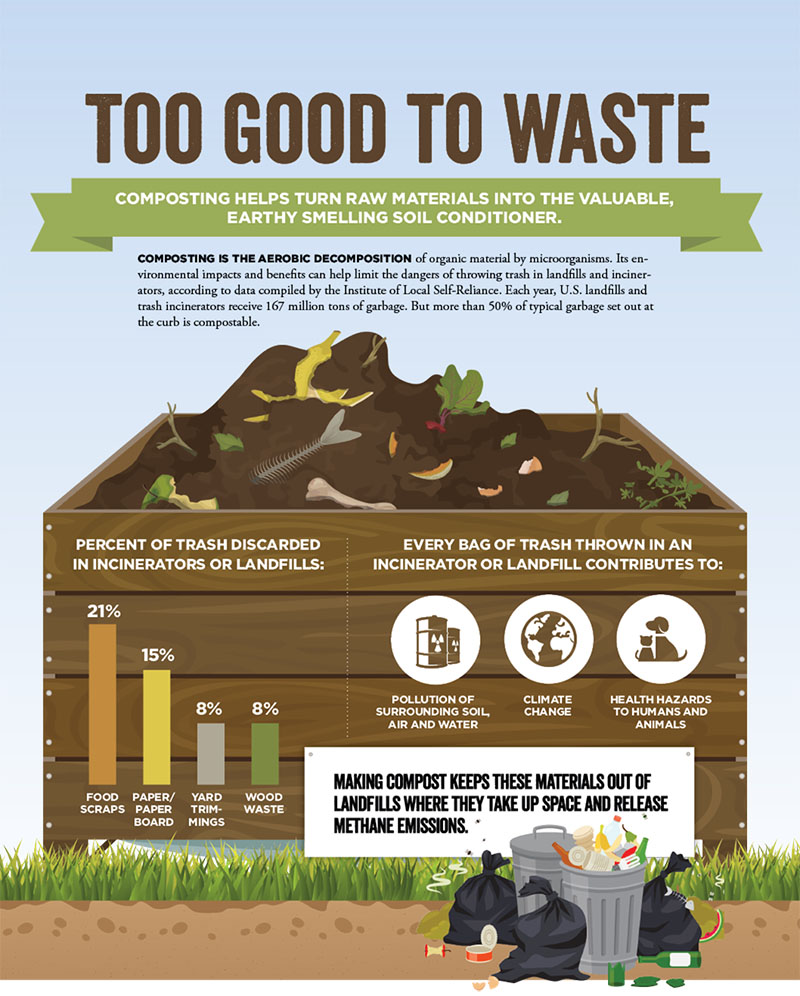
While this will help reduce global warming, the byproduct of this process is also hugely beneficial to our gardens and the quality of our immediate environment.
Compost is full of microbes, nutrients, micronutrients and minerals, so when it’s introduced to your existing soil your growing medium is supercharged, allowing your plants to thrive. When added to soil, compost can improve its structure, ensuring that water and air is able to reach plant roots while also improving moisture retention. A well-structured soil with added compost will absorb more water than a poor quality soil, reducing run-off and therefore lessening the volume of topsoil that’s washed down to lower elevations. Compost can also balance pH levels, helping you as you strive to provide the neutral conditions considered suitable for the vast majority of plants.
A versatile product with many uses around the garden, compost can be used to improve the quality of soil in flowerbeds, borders, vegetable patches and even your lawn, as a good quality lawn dressing soil will include a nutrient-rich compost in the mix.
How to make compost
What can be composted
Almost anything that was once alive can be composted, with a few exceptions that we’ll cover later.
Compostable material is often talked about as either “greens” or “browns”. Greens are nitrogen-rich ingredients that often break down quickly and get the composting process started. Grass clippings, young weeds and uncooked vegetable peelings make for great activators or accelerators, but when composted alone will turn into a smelly, mushy mess.
Browns are carbon-based ingredients like woody material, dead shrubs, tougher weeds and even cardboard. These ingredients decay slowly and add body to your compost, but the toughest material should be shredded before composting as it may take many months or even years to break down otherwise.
Greens (nitrogen-rich)
- Grass cuttings
- Soft green prunings and young weeds
- Vegetable peelings and fruit scraps
- Nettle leaves
- Coffee grounds and teabags
- Animal manure from herbivores (not dog and cat faeces)
- Seaweed
- Diluted urine
Browns (carbon-rich)
- Autumn leaves
- Branches, twigs and other woody prunings
- Straw and hay
- Old perennial bedding plants
- Sawdust
- Paper and cardboard
- 100% cotton fabric (synthetic material won’t break down)
- Bedding from herbivore pets (i.e. guinea pigs and rabbits)
Other compostables (in moderation)
- Wood ash
- Eggshells

As you begin composting you’ll develop a sense of how to balance the amount of greens and browns, but a good rule of thumb is to try to maintain a 1:2 ratio (twice as many browns as greens). Without browns your compost will lack structure and smell unpleasant, but without greens the decomposition process won’t really get started. If you’re struggling to find browns then autumn leaves might be the answer, and if you don’t have any to hand you should be able to find a tree surgeon locally who would be happy to donate some.
Struggling for greens? Diluted urine will get things moving, and we all have plenty of that.
What shouldn’t be composted
Remember when we claimed that all things that were once alive can be composted? Well we weren’t far wrong, but there are some once-living ingredients and animal byproducts that should be avoided, as they can attract vermin, encourage disease and make your compost smell awful.
Avoid composting all of the following:
- Meat and fish products
- Dairy products
- Cooked food
- Cat litter and cat or dog faeces
- Coal, coke and barbeque ash
- Disposable nappies
How long does composting take
Wondering how long before you can use your compost to improve your garden?
The speed of the decomposition process depends on many factors, including the types of ingredients composted, the size of the pile or bin and how often you turn the material.
Ingredients can take anywhere between four weeks and two years to completely break down, but if you’re in a rush there are ways to speed things up:
- Heap or bin size
A 3 x 3ft heap is the optimum size to promote decomposition as it’s more likely to stay warm, and hot composting is quicker than cold. - Keep turning
Turn your pile weekly to introduce more air, as oxygen is essential for microbes to do their best work. If you’re not able to turn the material, make sure you aerate with a long-pronged garden fork. - Maintain balance
Ensure a healthy balance of greens and browns – aim for 1:2 in favour of browns, but if you think things are going too slow you may wish to introduce more moisture or a natural compost activator such as grass clippings, seaweed or even diluted urine. Some compost heaps will be successful with a mix closer to 50:50 but just be careful not to go too far, as a smelly, liquified mess won’t be far away. - Shred your browns
If you’re adding whole sheets of cardboard or large woody branches, it could take many months or even years for these items to fully break down. Instead, shred such items into smaller pieces, making them more readily compostable.
How will you know if your compost is ready?
You’ll need to play it by eye, and nose! A mature, healthy compost will be dark brown, earthy and much like soil in terms of its texture. It should smell like an autumn walk in damp woodland.
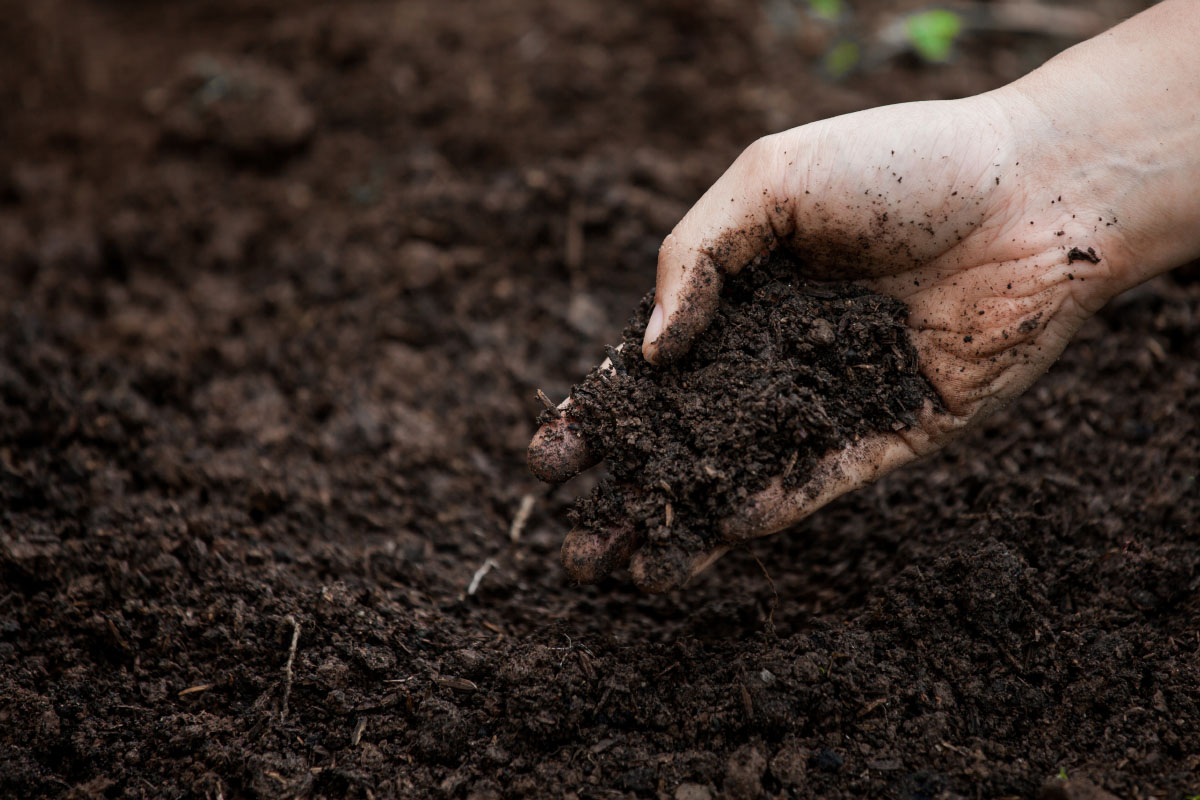
There will always be some material in your compost that’s not ready to be applied to your garden, so just leave this in situ and add new ingredients to the mix once you’ve used the mature compost around the garden. The existing compost will act as an activator as it’s already full of beneficial microbes etc.
Layering compost
If you’re just getting your compost pile started, layering your greens and browns is recommended as this ensures that as much of the brown waste is in contact with nitrogen-rich greens as possible.
Think of your compost like an earthy-smelling parfait and one you might not be keen to eat, or perhaps a lasagne. 4-6in of browns, then 4-6in of greens, and so on until you reach the top (or run out of material). It may be preferable to finish off with the brown layer as this tends to be least smelly.
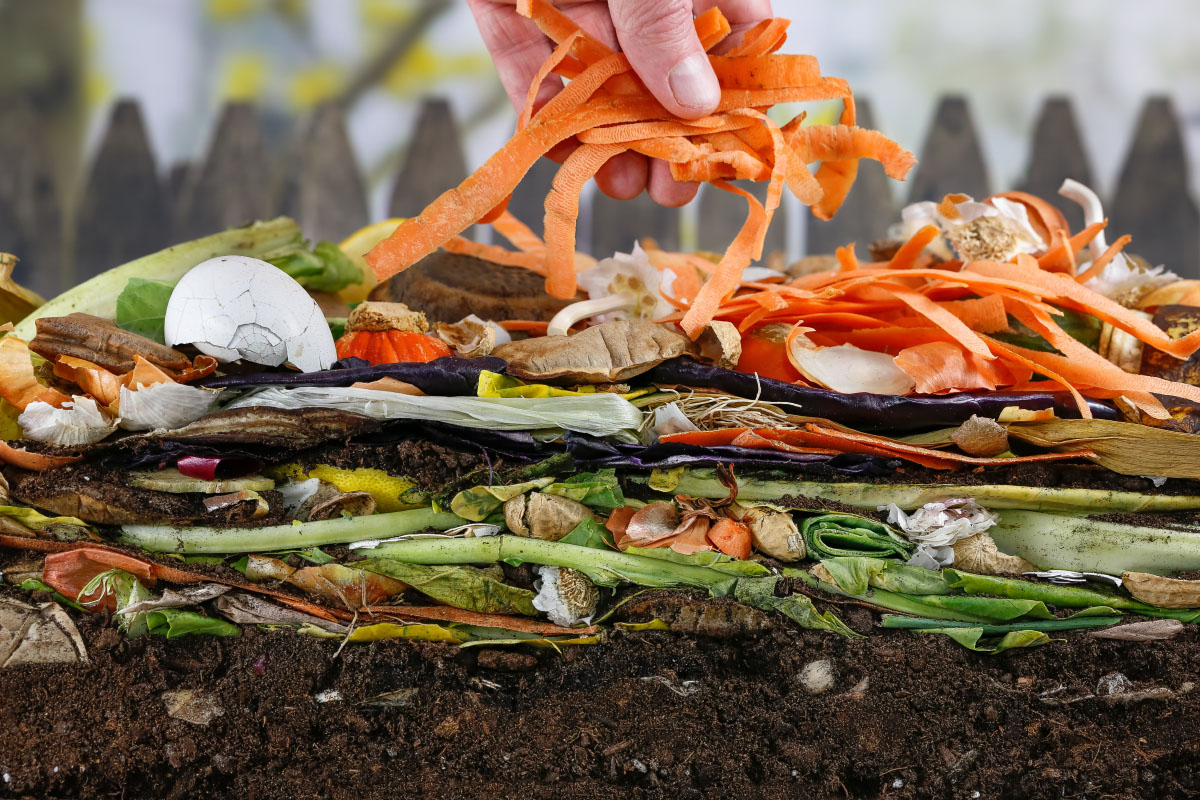
Heap, bin or tumbler?
There are a few different approaches to composting outdoors, each of which has a bunch of pros and cons.
An open heap is undoubtedly the cheapest approach – just pile it high and keep turning the material. But this is probably the slowest of the three choices you could make, as moisture and warmth isn’t retained as well as compared to an enclosed bin, for example. It’s also worth bearing in mind that moulds can form during the decomposition process that pose a serious health risk to both cats and dogs, so if you have pets we wouldn’t recommend the open heap option.
Bins come in a variety of shapes and sizes, from enclosed plastic barrels through to wooden structures that are more exposed to the elements. The more exposed the bin is, the more difficult it is to control the volume of water that gets introduced. It’s also difficult to retain moisture and warmth in a bin without a lid, so while the decomposition process won’t be as slow as with an open heap, it’ll still take some time before you have access to usable compost.
The ideal compost bin will have a lid of some kind that prevents too much water from entering, will allow water to drain freely, will have vents to allow air to enter and will provide easy access so it’s not a chore to turn the material each week.
Tumblers are a newer addition to the market and are growing in popularity – despite being quite expensive – as they allow you to do away with the pitchfork, allowing you to simply crank a lever to turn your compost. Tumblers should be perfect for hot composting as they can provide the ideal environment, and hot composting means fast composting. Unfortunately, as tumblers aren’t positioned on the ground, there’s no soil base contributing to the decomposition process. Many people forget this and don’t introduce enough activator material to get things moving, but adding some garden soil ought to do it. Of course, enclosed bins with bases or heaps placed on concrete will suffer the same issue and require some kind of activator, either soft greens such as grass cuttings, garden soil, manure or diluted urine.
Compost location
Depending on the size of your garden you may not have much choice regarding where your compost heap goes, but an ideal site would be somewhere partially shaded. Compost benefits from the warming effects of the sun, but plastic bins in particular overheat when exposed to full sunlight for prolonged periods. If the conditions inside your compost bin are too hot, beneficial microbes will struggle to establish and die off as you head into the warmer months, slowing the decomposition process. If you’re concerned that your bin is too hot you can turn or aerate the compost to cool it, but you may have to think about moving the bin to a more suitable location.
Indoor composting
The more queasy among us may not be keen, but indoor composting – particularly in apartments or homes without gardens – is a growing trend and there are a couple different approaches.
For those of you with gardens or yards, you may wish to get yourself a small kitchen bin or caddy that you can fill with food waste before emptying it into your outdoor compost bin.
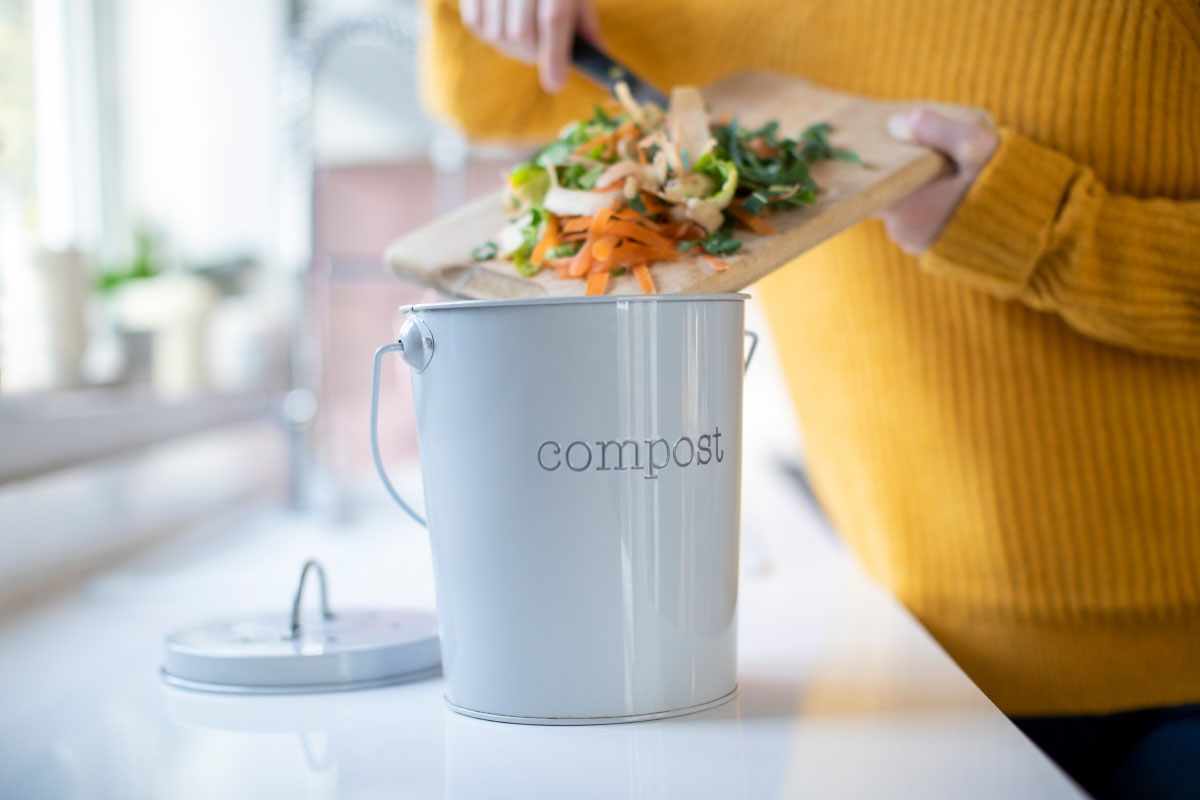
If outdoor space is at a premium, you can do your composting right there in the kitchen. There are various bins available but we’d recommend something that seals tightly and is straightforward to empty. If you’re concerned about odours there are products that include carbon filters to eliminate unpleasant smells.
Kitchen or ‘urban’ composters that can provide liquid fertiliser on tap are great if you intend to feed houseplants with the fertiliser. Bokashi composters feature this design and are ideal if you’re in a rush, as the bokashi bran speeds up the decomposition process. We should warn you however that while the compost is more or less odour-free, the bran itself does have quite a pronounced smell that some may not be keen on!
Worm composting
If you’re happy to share your home with a bunch of little worms – and who wouldn’t be? – then vermicomposting may be for you. There are plenty of vermicomposting bins on the market and with the addition of worms and the right types of food waste, you can have your own little ecosystem sat in a bucket in the kitchen. This is a great way to get kids engaged not only with recycling but with nature, and help them take their first steps into animal husbandry (of a sort).
Of course vermiculture is also suited to outdoor environments, but it’s important to make sure that you provide a habitat for your worms that will allow them to thrive. A plastic bin or tumbler that prevents worms from escaping is no good, as they’ll die should the bin overheat in hot weather. They also prefer to live in bedding material that’s not too dry, not too wet. Take some material out of your bin and squeeze it – if water comes out it’s too wet, but if it feels dry then you may need to add some moisture to keep your worms happy and set the decomposition process back on track. A compost heap placed on a soil base may even encourage worms to visit without you purposefully introducing them.
Compost troubleshooting
While composting is fairly straightforward even for the beginner, there are a few pitfalls and problems people may encounter.
Luckily, there’s no composting problem that can’t be fixed.
1. Messy, smelly compost
Excess moisture will encourage flies, lead to foul odours and provide the perfect conditions for plant diseases to thrive.
You can tackle this by turning your compost and introducing carbon-based brown ingredients as you go, particularly drier material such as sawdust, straw and shredded cardboard. This will improve the structure of the soil, allowing water to drain more freely. It will also help you find the optimum greens vs. browns ratio, and while one part greens, two parts browns is generally recommended, a 1:3 ratio in favour of browns might suit you better.
2. Cold heap and ingredients not breaking down
This issue could be caused by a reverse of that above, and it may be that you need to introduce some water or nitrogen-rich greens to the mix. A compost heap that’s cold right through is a heap that’s lacking those essential beneficial microbes that do all the hard work, breaking down your garden and food waste.
You can even purchase commercial compost activators or accelerators if you must, but things like leafy greens, manure or kitchen peelings should prove just as effective. Introducing garden soil can also help, and piles located on soil bases rarely struggle to get going.
3. Compost heap attracting pests
We touched on flies earlier, but pests come in all shapes and sizes, from fungus gnats and beetles through to mice and rats!
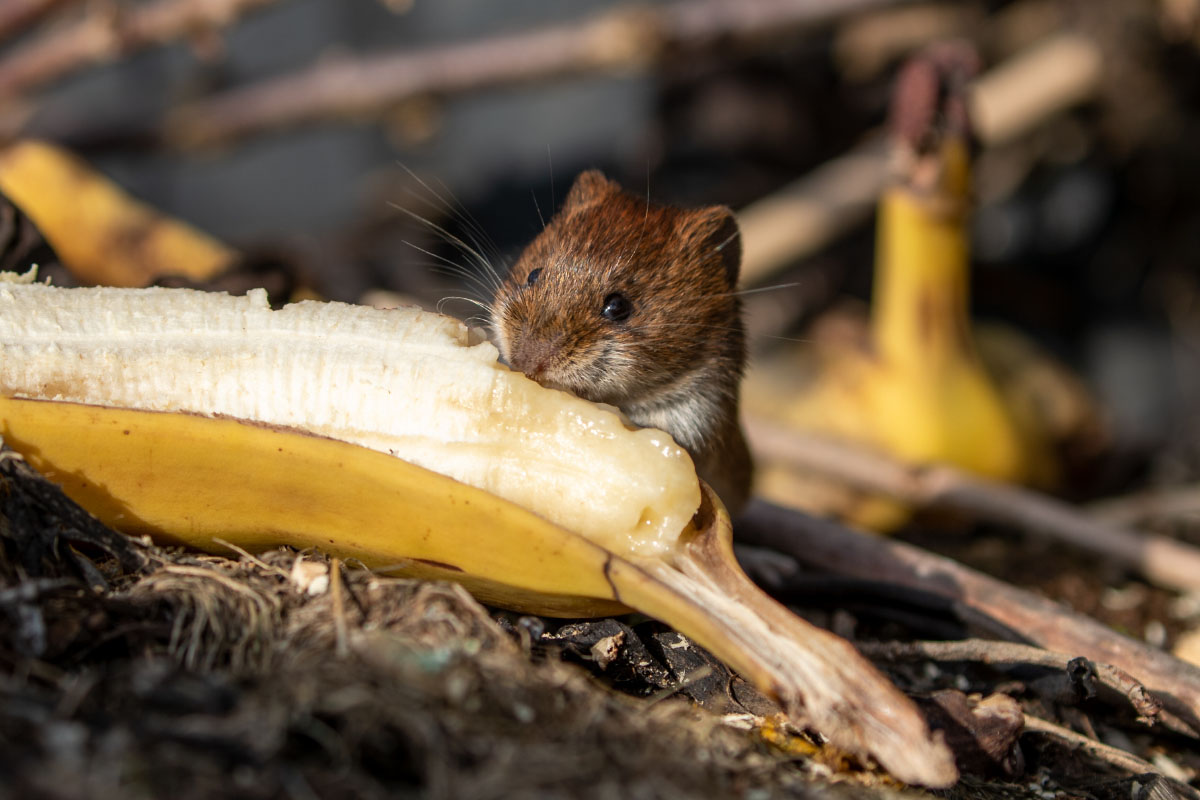
If your compost is attracting vermin it could be that you’re adding the wrong type of food waste. Meat and dairy products break down slowly and are very appealing to various rodents that you’d probably rather not have around your garden. Some food waste may even tempt foxes. Plastic bins or tumblers tend to be inaccessible to vermin but a wire mesh lining could be all you need to keep most larger pests out of more exposed bins, such as the wooden designs that remain popular. Flies, gnats and beetles tend to prefer wetter conditions, so make sure your compost is free draining and not permanently saturated.
4. Plants growing in your compost
With any luck you’ve produced a nutrient-rich growing medium, so don’t be surprised if something starts to grow in it! Weeds can be pulled out, teared apart and thrown back in. If the plants that are growing are of use in your garden, why not transplant them elsewhere?
Tumblers and plastic bins tend to discourage things from growing due to lack of UV light penetrating the container, so if this really bothers you then plastic may well be the way to go.
5. Finished compost is too coarse to be useful
If you’re finding that the compost you end up with at the end of the decomposition process is too coarse in texture, you may need to shred those browns before adding them to the mix. Shrubs, tough weeds, cardboard, paper, eggshells and various other ingredients decompose very slowly, so don’t be tempted to just throw a tree branch in there thinking it will break down to dirt inside a few months. Even paper can clump together and take many months to break down properly.
Where to get compost
This article was written in the hope that it will encourage people to compost at home, which can help reduce the environmental burden of our food and garden waste.
If you’re struggling to find enough waste of either type (greens or browns), how about reaching out to neighbours or even local businesses who may have what you need? Tree surgeons and landscaping companies often have excess waste that they have to pay to dispose of, and may even be able to provide you with ready-shredded browns all bagged up. Stable owners may have manure available free or at a reasonable price.
Communal compost bins or heaps are another option if you live somewhere with communal space that could be used for such a purpose, but make sure that everyone using it has read this article and understands what can and can’t be composted!
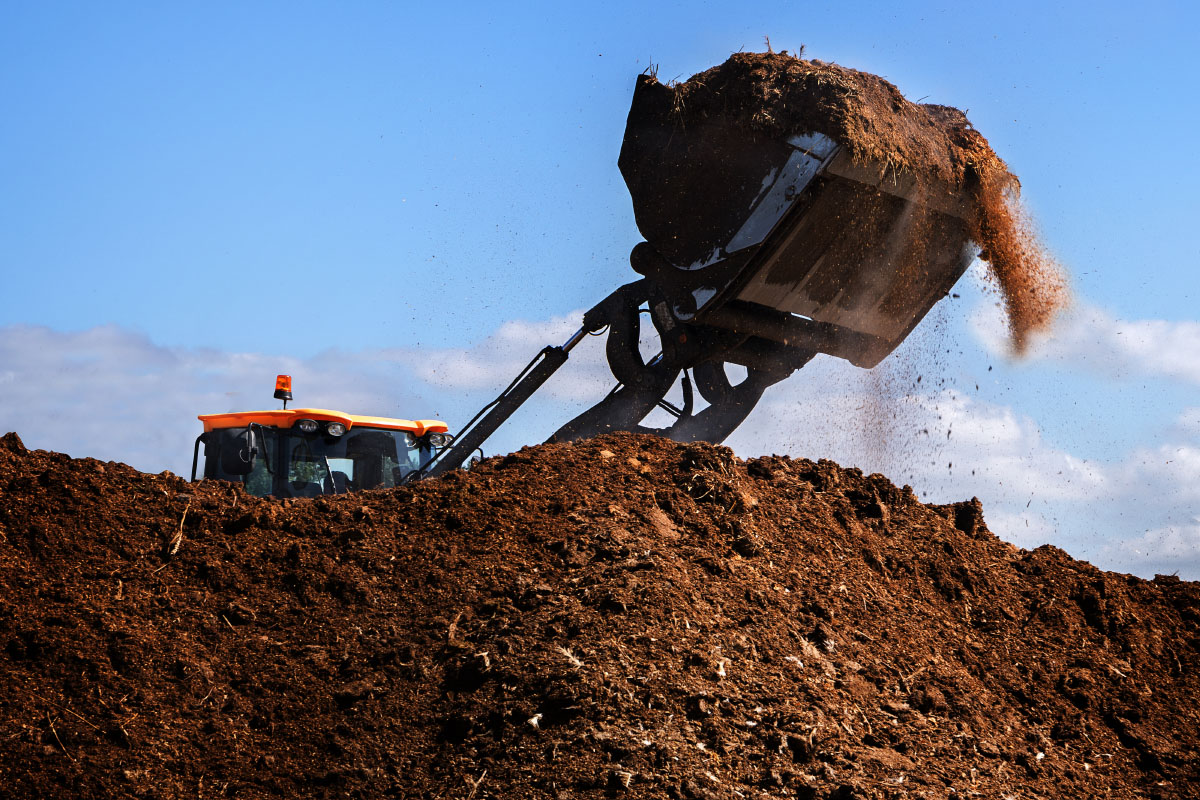
Even those with compost bins may find they’re simply unable to produce enough compost for their needs. In which case, they’ll need to source compost from elsewhere. Fortunately, all garden centres and many supermarkets supply smaller bags of composts, and here at Greenvale we supply large cube bags of high quality compost to our customers throughout the North West of England.

